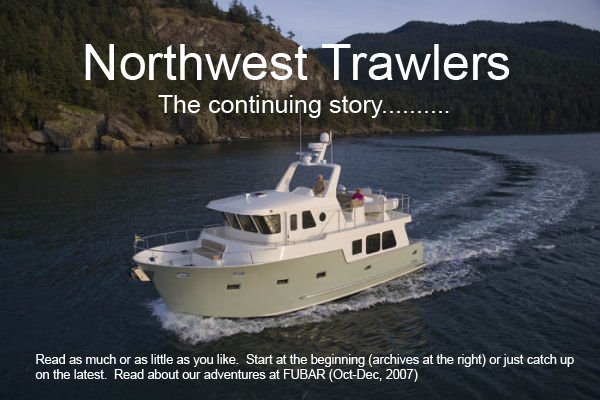

The steel fabrication shop delivered the keel shoe and you see it here on the bench before installation and then on the boat. This is a very robust structure made out of 1" stainless steel. It will support the bottom of the rudder and provide protection against prop fouling or in the event of an inadvertent grounding. You know there are 2 kinds of boaters......those that have gone aground and those that will......
 The engine has been set into position so that the shaft log can be aligned and glassed into place. The engine pan has been bonded to the hull using Plexus and fiberglass.
The engine has been set into position so that the shaft log can be aligned and glassed into place. The engine pan has been bonded to the hull using Plexus and fiberglass.  The waste plumbing is in place. Note that all of the accessible areas in the bilges will be gelcoated. This not only looks better but it makes keeping the bilges clean a snap.
The waste plumbing is in place. Note that all of the accessible areas in the bilges will be gelcoated. This not only looks better but it makes keeping the bilges clean a snap.

































